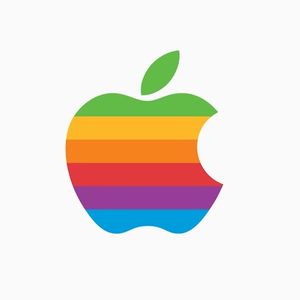April 4, 1998
Why a Mac? (An Open Letter)
Well, the plain-and-simple answer is that Macs are a fact of life. Our students use Macs, some of us use Macs, and sometimes a Mac is just plain superior in some tasks. We want to be able to easily translate documents between platforms — a Macintosh does this effortlessly. Since we want to create more multimedia in 202, the Macintosh's software base, especially photo manipulation software, often exceeds the limits of Wintel-based software.
A PowerPC may be easily implemented on an NT server, so this should not be a concern. PowerPCs are (presently) faster than Pentiums, and many people prefer them for their work. We want to be able to give our students, especially those in technical writing environments, the resources to learn their discipline to the best of their abilities. Often this requires a Macintosh.
(The rest of this represents my synthesis of facts I found on the web. You might want to stop here, or read on if you are interested in an editorial.)
Many Information Services departments, filled with people who like job-secure PCs, do not like Macs, and have always angled for ways to get rid of them. The recent press slams have been fuel which they add to the fire which they have been trying to light under executives for years.
"Standardization" is a rubric that enhances the power of the IT (Information Technologies), and unifies their control of departments in a company. It does nothing to improve the productivity of the company or the individuals beyond the IT department. In many cases, such as NASA, the IS/IT people are driven back. In the cases where the Macs are actually moved out of a site, an interesting thing happens: people bid to get them back. (Like us!)
Macintosh is to Wintel as Mercedes is to Chevy: in the used computer business, Macs are very hot ticket items. The software for Macs is backwards compatible to most of the oldest machines, giving a six-year-old computer the ability to run today's software (albeit a bit more slowly than its speedy new counterpart.) Six year old PCs are, for the most part, junk, unless you have software from the same era to run on them.
If Macs are "dumped" from one location, they seem to quickly find new homes in another location. An old PC, however, has more of a future as a doorstop or a coffee table than a computing device. See our current situation in 202.
Macs provide one thing which PCs tend to take away: user confidence. Users who use Macs can solve their own problems without resorting to learning complex languages, file systems, or the ever-popular SysReq file and IRQ jumper switch. The design of the operating system encourages learning. Often, the complexities of DOS and Windows frustrate users to a degree that they resist learning the computer, and actually become afraid of it enough to call in a paid consultant or IS professional rather than deal with it themselves.
Students who use Macintosh are far more likely to outperform students who learned on a PC even when the Mac students are moved to a PC. Why? Because the problem-solving techniques which they learned on the Mac serve them in good stead when tackling the sometimes daunting challenges of Windows.
A PC is to a Macintosh just as Rich Little is to John Wayne. They may sound the same, but that's where the comparison ends. Apple, Netscape, and others innovate. Microsoft imitates, and sometimes amplifies. Microsoft is driven by what profit it can wrest out of technology. Apple is driven by what profit its customers can achieve through its technology.
This has been one of the cornerstones of Wall Street's dislike of Apple. Apple could charge its users big dollars for its operating system upgrades, major and minor. It has not. Apple could make every component it creates a pricey add-on which elevates the company's bottom-line. It does not.
Apple's view of its market is far more long-term than most of the short-term stock analysts prefer or understand. By disseminating certain technologies without cost, it builds standards quietly, gaining strong foot-holds in technology sectors which Microsoft enters through expensive advertising and old-fashioned arm-twisting.
Apple's adoption of the NeXT operating system as part of its Mac OS upgrade provides a strong, well-liked programming environment which needs many of the user-friendly features of the current Mac OS. The two combined provide a powerful, yet easy to use computer, and bring Apple forward into the business marketplace with a very powerful product run on even more powerful PowerPC microprocessors.
Apple continues to operate on the premise that the computer must become much more simple, and that the end-user must be able to exercise complete control over the computer environment, much as they do with their office desk, cubicle, or home office.
The primary difference between Windows and Macintosh is simple. Windows is a candy-coating over a system structured to keep "professionals" in charge of computers, and the end-user shackled to those professionals. Macintosh represents computing as it was promised to be: Easy, inexpensive, productivity-enhancing, life-enriching, and independent.
